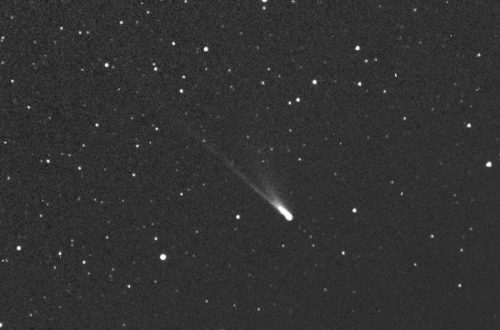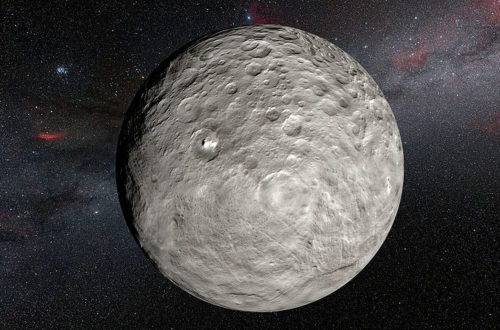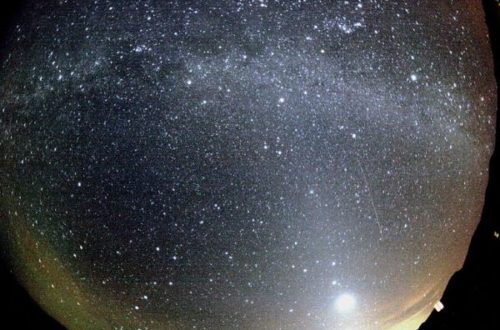Stargazing Calendar for January 2025
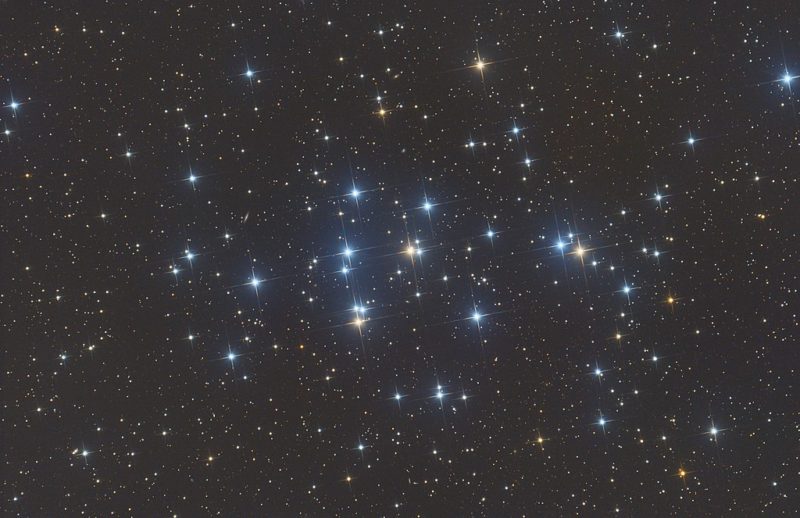
January 2025 offers a wealth of celestial wonders for stargazing and astronomy enthusiasts. From asteroid oppositions and conjunctions to meteor showers and planetary alignments, the night sky promises captivating sights. Don’t miss these opportunities to explore the cosmos and deepen your appreciation for the universe’s splendor!
Would you like to be notified of stargazing events?
List of Meteor Showers in January 2025
- Antihelion Source: Start on December 10; multiple peaks; end September 10.
- Comae Berenicids: Start on December 12; peak on December 16; end on February 4.
- Quadrantids: Start on December 26; peak on January 4; end on January 12.
- γ-Ursae Minorid: Start on January 15; peak on January 20; end on January 25.
- α-Centaurids: Start on January 28; peak on February 8; end on February 21.
We also have a complete list of meteor showers for the entire year of 2025 here.
List of Planetary Conjunctions in January 2025
- Conjunction of the Moon and Venus in Aquarius on January 3.
- Conjunction of the Moon and Saturn in Aquarius on January 4.
- Conjunction of the Moon and Jupiter in Taurus on January 10.
- Conjunction of the Moon and Mars in Gemini on January 14.
- Conjunction of Venus and Saturn in Aquarius on January 20.
January 3: Asteroid 14 Irene at opposition
Asteroid 14 Irene will be at opposition when it lies opposite to the Sun in the sky. It will reach the highest point in the sky around midnight local time, regardless of where you are in the world.
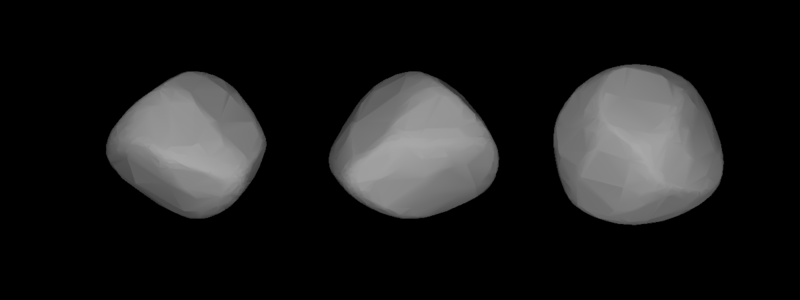
Look in the constellation of Gemini. Irene will pass within 1.477 AU of Earth, reaching a peak brightness of magnitude 9.6. You will need binoculars or even a telescope to observe it. Irene is a large S-type asteroid of around 152 km in diameter.

January 3: Conjunction of the Moon and Venus
The Moon and Venus will be at conjunction by sharing the same right ascension and passing within 1°26′ of each other.
Around an hour later, the two bodies will also make a close approach (appulse) reaching 1°18′ from each other, but no longer sharing the same right ascension.
Look for the two bodies in the constellation of Aquarius. The Moon will be a very thin waxing crescent (19%) at 4 days old and will not interfere much with stargazing this early January 2025. Despite this, the Moon will still be at apparent magnitude of -10.7, while Venus will be at magnitude -4.4.
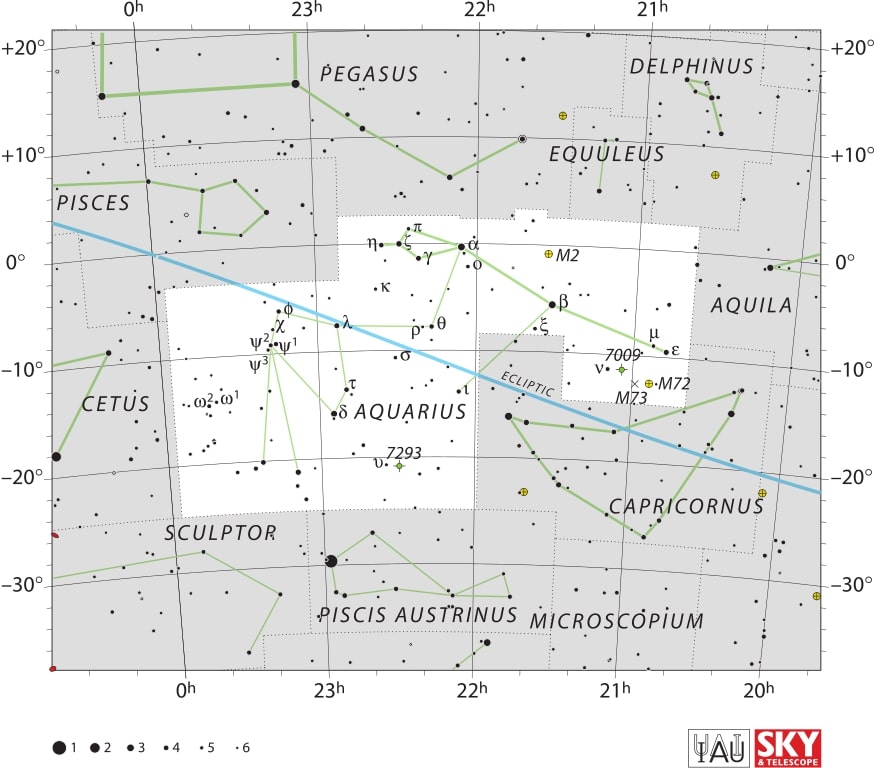
January 4: Quadrantid meteor shower peak
The Quadrantids is one of the largest meteor showers of the year. It will peak with 120 meteors per hour on average (zenithal hourly rate), assuming ideal viewing conditions. Fortunately the viewing conditions will be close to ideal because the Moon will be a 5 days old waxing crescent at 21%.
Some meteors can also be seen between December 26 and January 12, radiating from the constellation of Boötes at the average speed of 41 km/s. They originate from debris left behind by asteroid 2003 EH1.
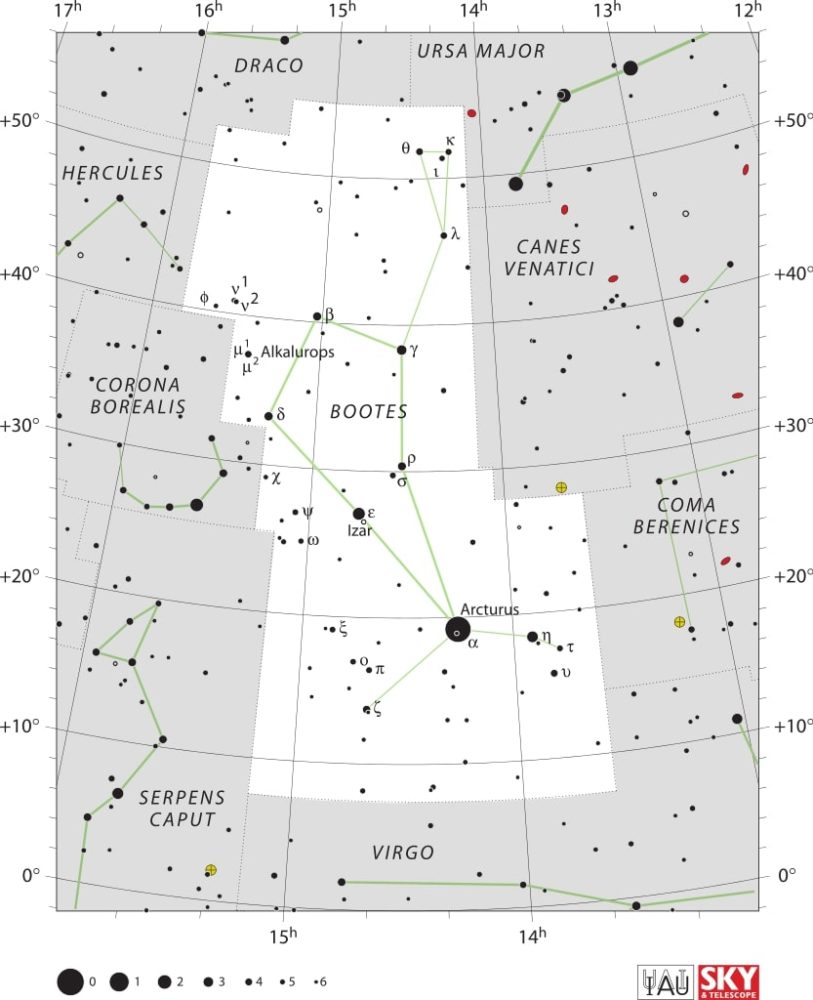
January 4: The Earth at perihelion
On this day, the Earth will reach its closest point to the Sun (perihelion) in its slightly elliptical orbit. We will be at a distance of 0.9833 AU from the Sun. The Earth’s distance only varies by 3% over a year.
Although not really noticeable, the Sun will appear 3% larger in the sky. But don’t look straight at the Sun without protecting your eyes!
January 4: Conjunction of the Moon and Saturn
The Moon and Saturn will reach conjunction passing within 40′ of each other while sharing the same right ascension.
At around the same time the two bodies will also make a close approach (appulse) reaching 36.3 arcminutes from each other, but not sharing the same right ascension. In most of Europe and some parts of north western Africa, western Russia, and eastern Greenland this distance will be so close as to lead to a lunar occultation of Saturn, meaning the Moon will pass in front of Saturn thereby hiding it from view temporarily.
The Moon will be at apparent magnitude -11.3 and Saturn at magnitude 0.9 both in the constellation of Aquarius. (Constellation map already displayed above, when discussing the Conjunction of the Moon and Venus on January 3.) The Moon will be 5 days old waxing crescent at 30%.
January 10: Close approach of the Moon and the Pleiades

The Moon and the Pleiades (also known as M45 or Messier 45) will make a close approach, passing within only 19.2 arcminutes of each other.
Both objects will be in the constellation of Taurus with the Moon being at apparent magnitude -12.5; and the Pleiades at 1.3. The Moon will be 11 days old and waxing gibbous at 86%.
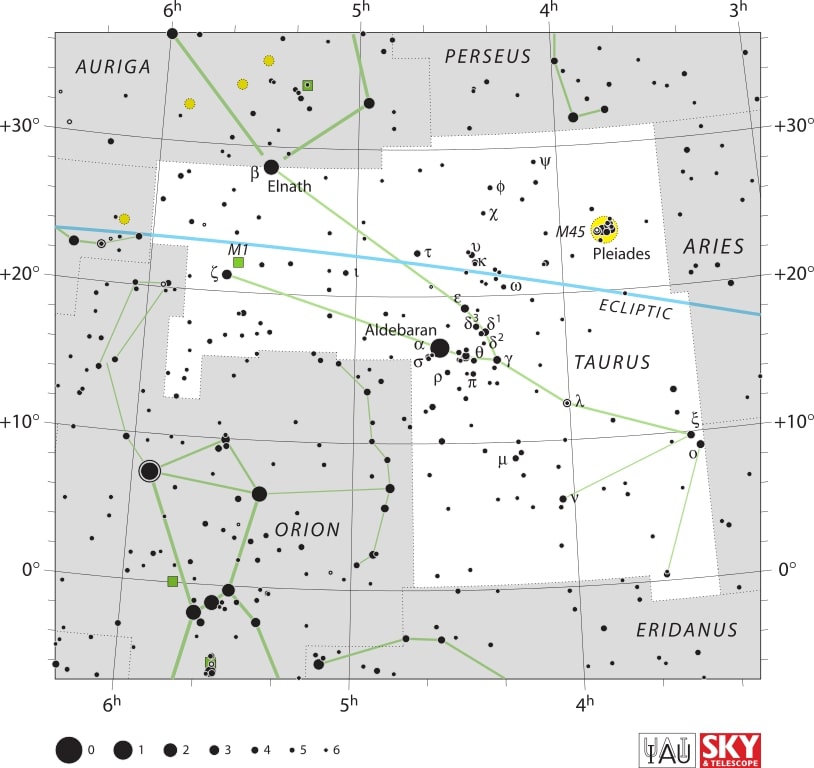
January 10: Venus at greatest eastern elongation
Venus will be at its highest point above the horizon in the morning sky, making it the best time to view the planet. Look for it low in the western sky just before sunrise.
It will be at apparent magnitude -4.4 in the constellation of Aquarius. (Constellation map already displayed above, when discussing the Conjunction of the Moon and Venus on January 3.) The Moon will be 11 days old, waxing gibbous at 88%.
January 10: Conjunction of the Moon and Jupiter
The Moon and Jupiter will be at conjunction by sharing the same right ascension and passing within 5°25′ of each other.
At around the same time the two bodies will also make a close approach (appulse) reaching 5°21′ from each other, but not sharing the same right ascension.
The two celestial bodies will meet in the constellation Taurus with the Moon at apparent magnitude of -12.6 and Jupiter at -2.7. (Constellation map already displayed above, when discussing the close approach of the Moon and the Pleiades on January 10.) The Moon will be 11 days old and waxing gibbous at 92%.
January 12: Mars at perigee
Mars will reach perigee, which means it will be closest to us at a distance of 0.64 AU. This would be the best time to observe the red planet. In the next few days, Mars will also be at opposition.
The planet will be in the constellation of Cancer at apparent magnitude of -1.4. The Moon will be 13 days old and waxing gibbous at 99%, just a day away from full moon.
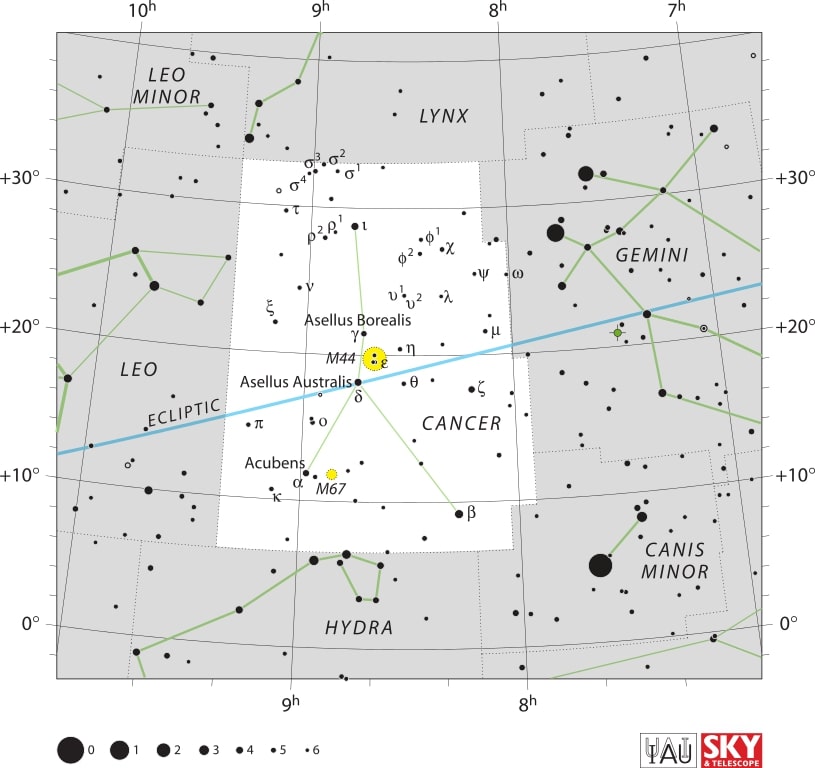
January 13: Asteroid 887 Alinda at opposition
Asteroid 887 Alinda will be at opposition when it lies opposite to the Sun in the sky. It will reach the highest point in the sky around midnight local time, regardless of where you are in the world. Alinda is a small near-Earth asteroid (4.2 km in diameter) with a very eccentric orbit.
Look in the constellation of Gemini. (Constellation map already displayed above, when discussing asteroid 14 Irene at opposition on January 3.) Alinda will pass within 0.086 AU of Earth, reaching a peak brightness of magnitude 9.2. You will need a telescope to observe it. Unfortunately the Moon will interfere a lot with stargazing this middle of January 2025 as it is at the full moon phase.
January 13: Comet C/2024 G3 (ATLAS) at perigee and perihelion
The comet C/2024 G3 (ATLAS) will reach perigee, meaning it will reach the closest point in its orbit to the Earth at a distance of 0.94 AU.
At about the same time the comet will also reach perihelion, meaning it will reach the closest point in its orbit to the Sun at a distance of 0.09 AU.
It will have an apparent magnitude of -4.4 according to the BAA Comet Section, so visible to the naked eye. Look in the constellation of Sagittarius.
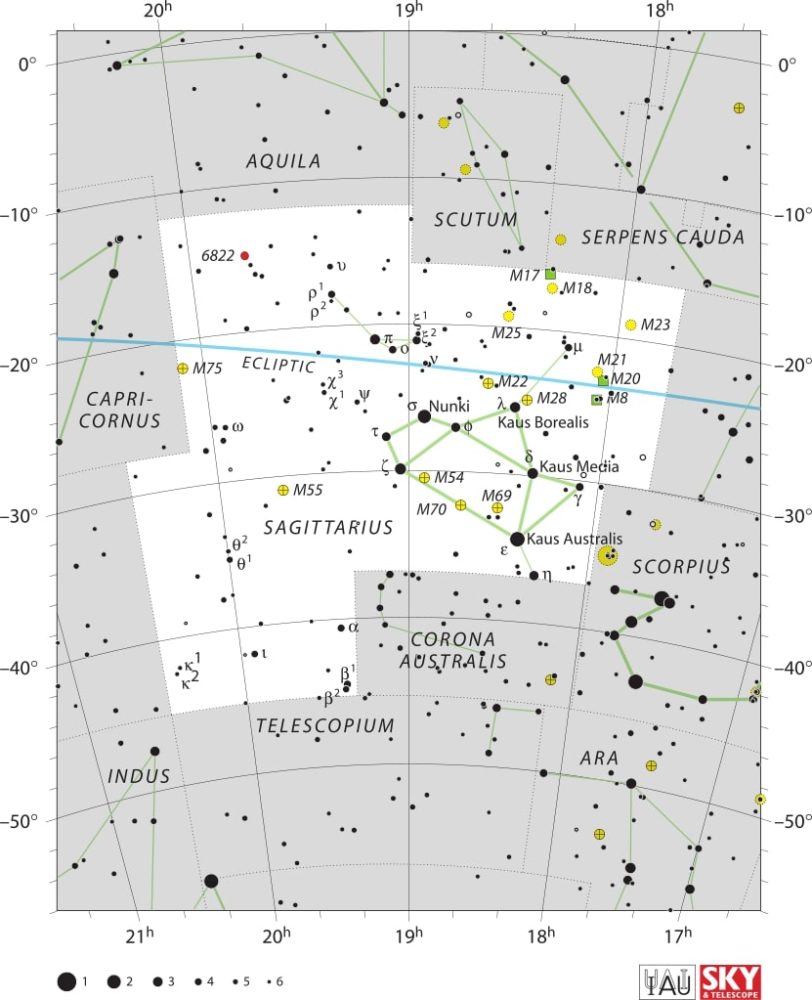
January 14: Conjunction of the Moon and Mars
The Moon and Mars will be at conjunction by sharing the same right ascension and passing within 13′ of each other.
Around the same time, the two bodies will also make a close approach (appulse) reaching 13.2 arcminutes from each other, but not sharing the same right ascension. In most of North America, a stretch of the Atlantic, and north western Africa this distance will be so close as to lead to a lunar occultation of Mars, meaning the Moon will pass in front of Mars thereby hiding it from view temporarily.
Look for the two bodies in the constellation of Gemini. (Constellation map already displayed above, when discussing asteroid 14 Irene at opposition on January 3.) The Moon will be at apparent magnitude of -12.7, while Mars will be at magnitude -1.4. The Moon will be waning gibbous (99%) at 15 days old.
January 16: Mars at opposition
Mars will be at opposition when it lies opposite to the Sun in the sky. It will reach the highest point in the sky around midnight local time, regardless of where you are in the world.
Because Mars was recently at perigee on January 12, it is still near its closest to Earth making it larger than usual (with an apparent magnitude of -1.4) and thus a good time to observe the planet. With a good telescope you could see a lot of details on the red planet. Look in the constellation of Gemini. (Constellation map already displayed above, when discussing asteroid 14 Irene at opposition on January 3.) The Moon will be waning gibbous (92%) at 17 days old.
January 18: Close approach of Venus and Saturn
Venus and Saturn will make a close approach, passing within 2°10′ of each other. Both planets will be in the constellation of Aquarius with Venus being at apparent magnitude -4.5 ; and Saturn at 1.0. (Constellation map already displayed above, when discussing the Conjunction of the Moon and Venus on January 3.) The Moon will be 19 days old and waning gibbous at 73%.
January 20: γ-Ursae Minorid meteor shower peak
The Gamma Ursae Minorids are a small meteor shower with 3 meteors on average during the peak if conditions are perfect, which unfortunately won’t be the case due to the Moon being 20 days old and waning gibbous at 69%.
Some meteors could also be spotted between January 15 and 25. They will appear to radiate from the constellation of Ursa Minor at the average speed of 31 km/s.
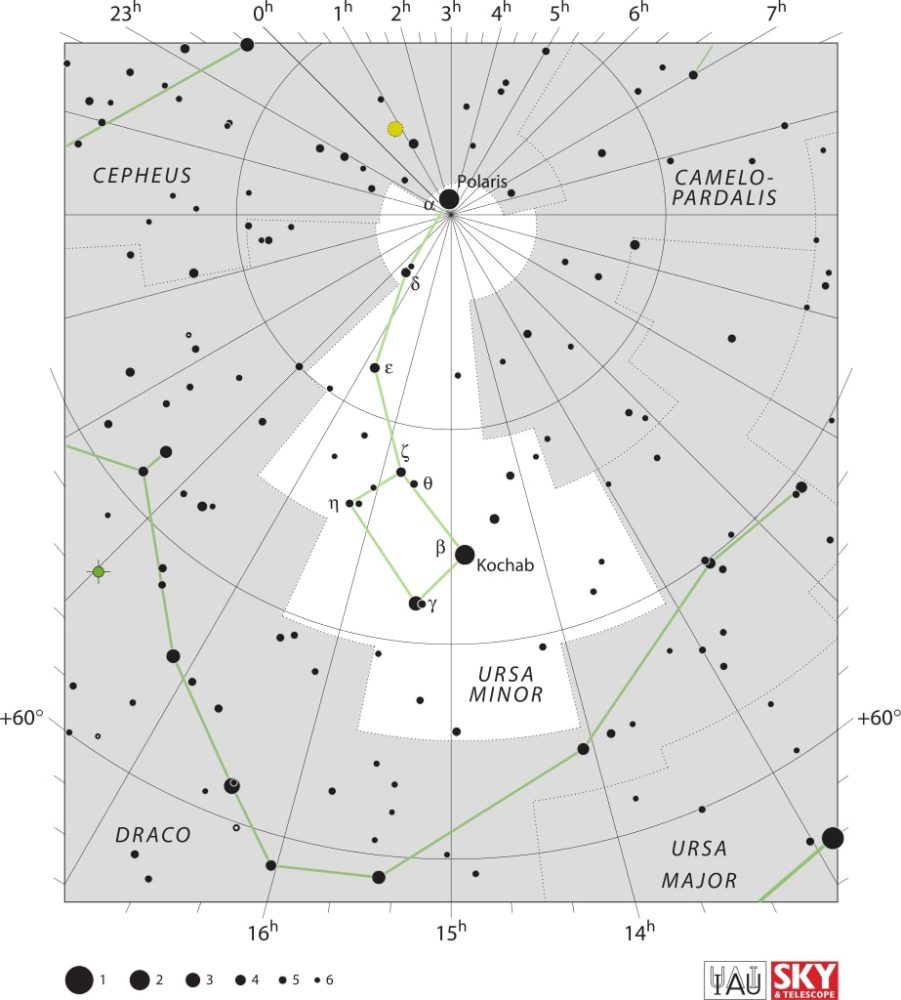
January 20: Conjunction of Venus and Saturn
Venus and Saturn will reach conjunction passing within 2°31′ of each other while sharing the same right ascension.
Venus will be at apparent magnitude -4.5 and Saturn at magnitude 1.0 both in the constellation of Aquarius. (Constellation map already displayed above, when discussing the Conjunction of the Moon and Venus on January 3.) The two planets will be too widely separated to fit within the field of view of a telescope, but will fit with binoculars. The Moon will be 21 days old waning gibbous at 60%.
January 30: Uranus ends retrograde motion
Uranus will end retrograde motion, which means it will stop traveling westward through the constellations and instead return to the more usual eastward motion instead. All of the outer planets in the solar system periodically experience this orientation reversal, which occurs a few months before they reach opposition.
Ancient observers were troubled by retrograde motion because it didn’t fit with their belief in uniform circular orbits around the Earth. The phenomenon is actually due to Earth’s orbit around the Sun, which shifts our perspective and causes planets to appear to move back and forth in the sky while continuing their overall eastward path through the constellations.
Uranus can be spotted in the constellation of Aries with an apparent magnitude of 5.7. Fortunately the Moon will not interfere much with stargazing this end of January 2025 as it will be a one day old waxing crescent at 3%.
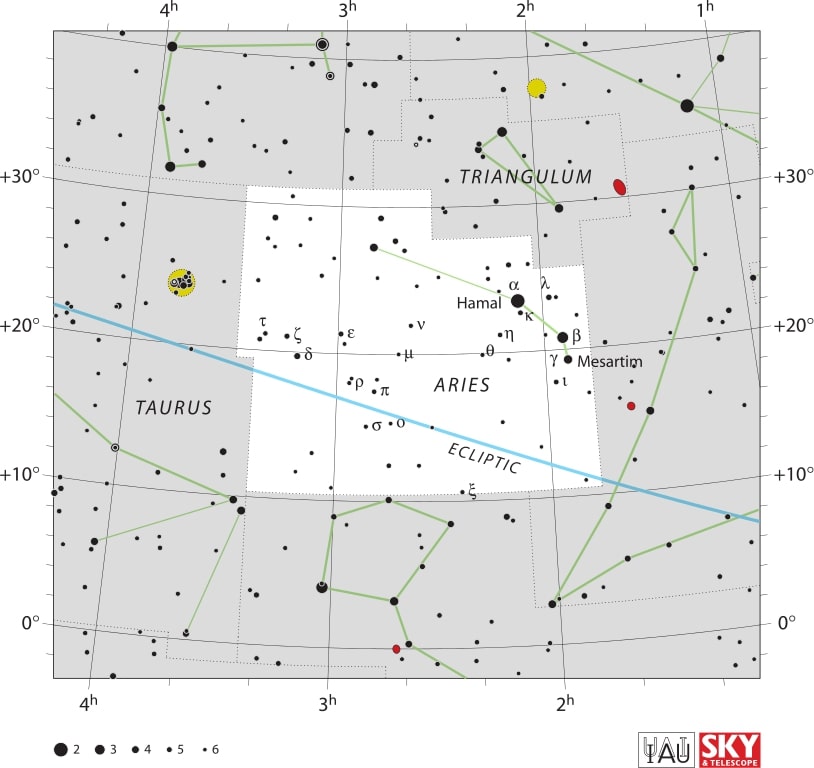
January 30: Beehive Cluster at its highest point in the sky
The Beehive Cluster (see featured image at the top of the article) will reach its highest point in the sky at around midnight local time, making it a good time to observe it. At an apparent magnitude of 3.1, it is very hard to spot with the naked eye, so binoculars or a telescope are recommended. Look in the constellation of Cancer. (Constellation map already displayed above, when discussing Mars at perigee on January 12.)
The Beehive Cluster is also known as Praesepe (manger or crib in Latin) as well as under the designations of M44, Messier 44, NGC 2632, or Cr 189. It has been known since antiquity and Ptolemy mentioned it in his writings.
It is an open cluster about 610 light-years away including about a thousand stars. Interestingly two exoplanets have been discovered in this cluster in 2012.
Moon Phases in January 2025
As you know, the Moon has a big impact on the visibility of celestial bodies and astronomical events in the night sky. So to help you with stargazing, here’s a calendar of the phases of Moon for this month of January 2025:
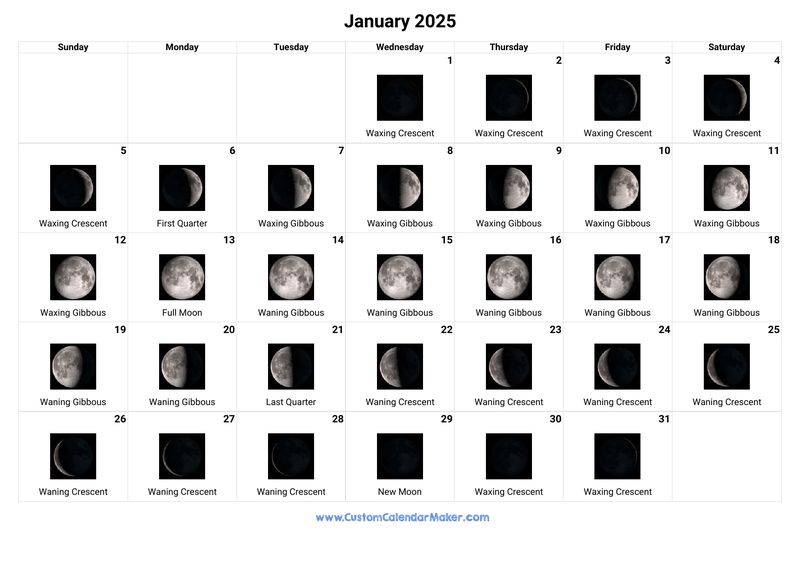
Positions of the Planets in January 2025
- Mercury: The closest planet to the Sun can be seen at dawn and dusk travelling across the constellation of Ophiuchus. This planet, being the closest to the Sun, will appear to move quickly in the night sky and its position will change in the following weeks.
- Venus: The sister planet can be seen travelling across the constellation of Aquarius. Just like Mercury, Venus can only be seen at dawn and dusk.
- Mars: The red planet can be seen in the constellation of Cancer.
- Jupiter: The gas giant is visible in the constellation of Taurus. Jupiter can easily be spotted with the naked eye, even in highly illuminated cities.
- Saturn: The ringed giant can be seen with the naked eye in the constellation of Aquarius.
- Uranus: The ice giant can be seen in the constellation of Taurus and then Aries with the use of a telescope.
- Neptune: The blue giant requires a telescope pointed in the constellation of Pisces in order to be seen.
Positions of Dwarf Planets and Large Asteroids in January 2025
- Ceres: The asteroid belt’s lone dwarf planet can be seen in the constellation of Capricornus with the help of a telescope.
- Vesta: This large asteroid can be seen in the constellation of Virgo with a telescope.
- Pallas: The asteroid can be observed with a telescope in the constellation of Serpens.
- Hygiea: The fourth largest asteroid can be found with a telescope in the constellation of Pisces.
- Pluto: This distant dwarf planet can be found in the constellation of Capricornus with the help of a large telescope.
Major astronomical events next month – February 2025
- February 4: Jupiter ends retrograde motion
- February 8: α-Centaurids meteor shower peak
- February 12: Asteroid 29 Amphitrite at opposition
- February 24: Mars ends retrograde motion
Conclusion
As you can see, January 2025 is packed with stargazing highlights for astronomy lovers, including meteor showers, asteroid oppositions, and stunning planetary alignments. To ensure you don’t miss out on any celestial happenings, sign up for our newsletter to receive stargazing calendars and more updates. Clear skies!
Sources:
- Planetary ephemerides produced by NASA’s Jet Propulsion Laboratory (JPL)
- International Meteor Organization
- British Astronomical Association Comet Section
See also:
- Previous month’s calendar: Stargazing Calendar for December 2024
- Next month’s calendar: Stargazing Calendar for February 2025
Would you like to receive similar articles by email?



